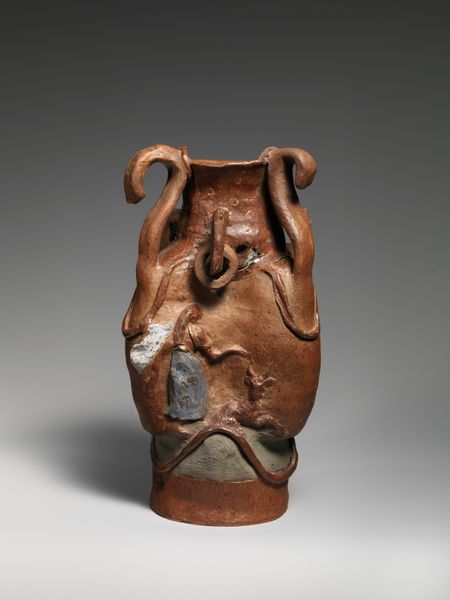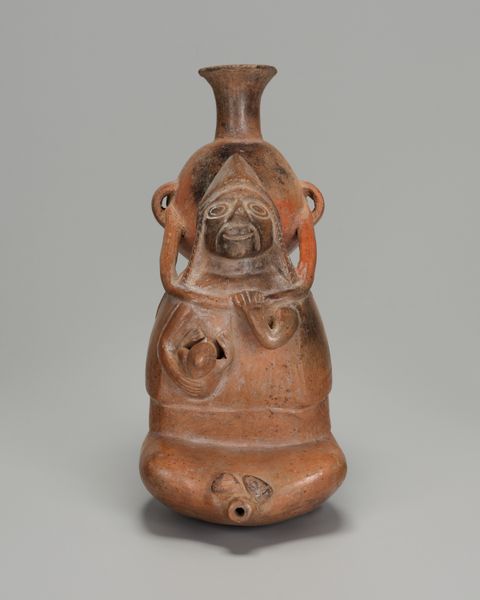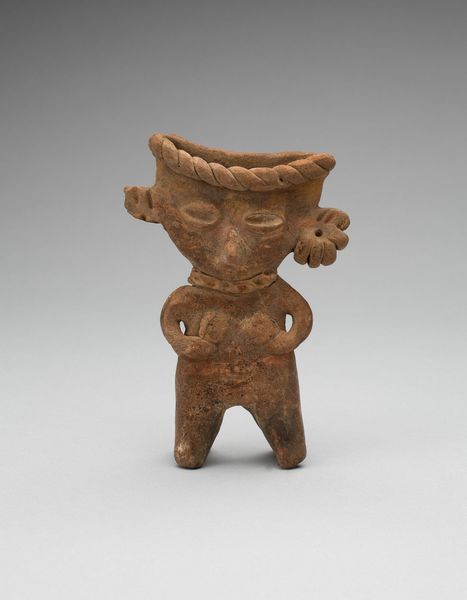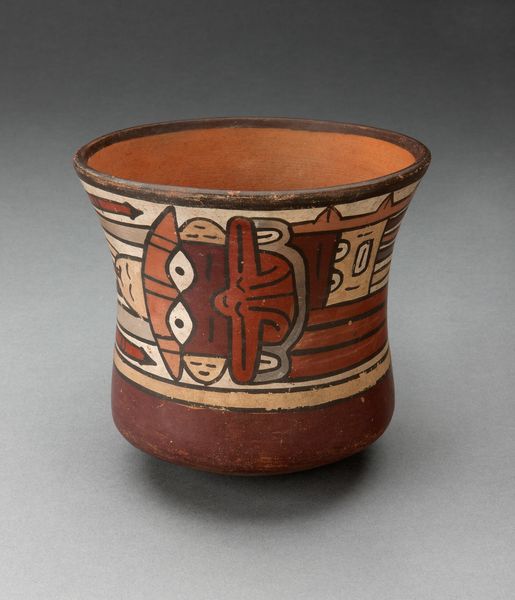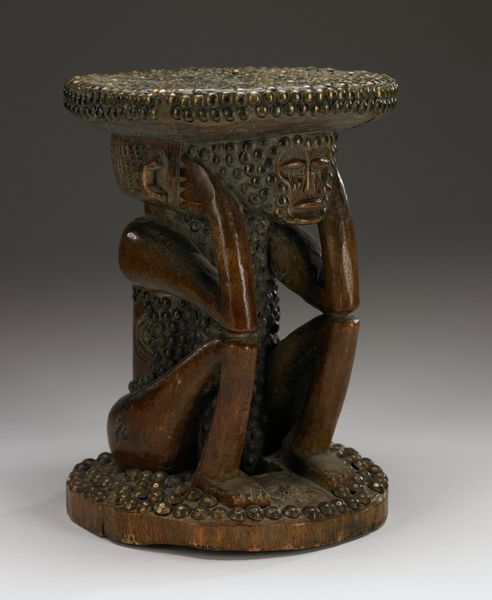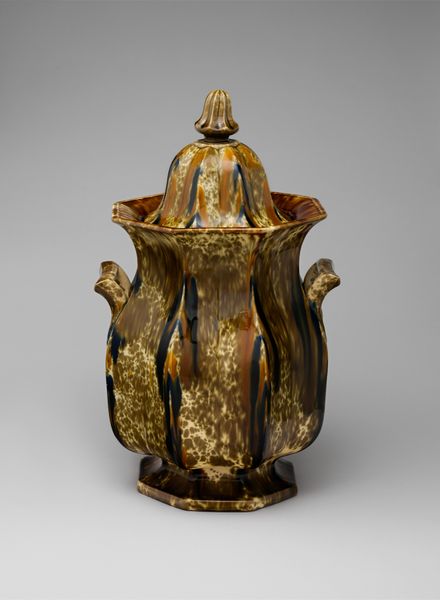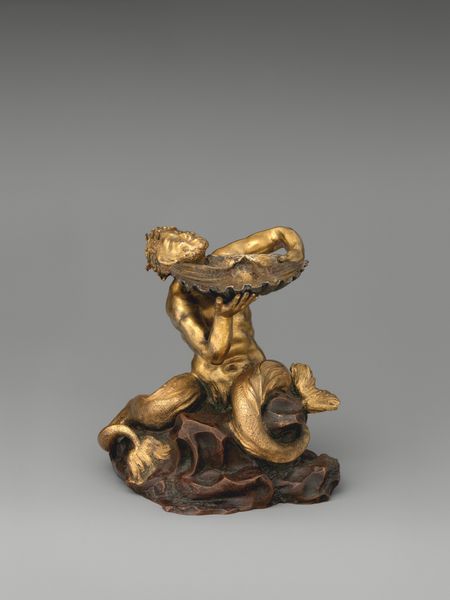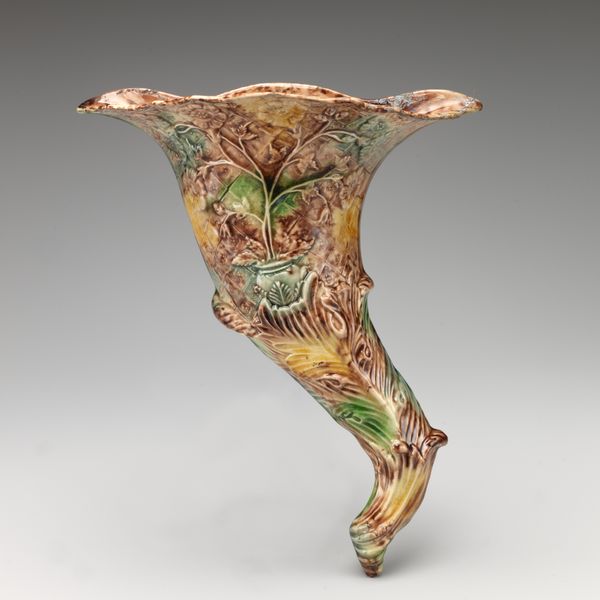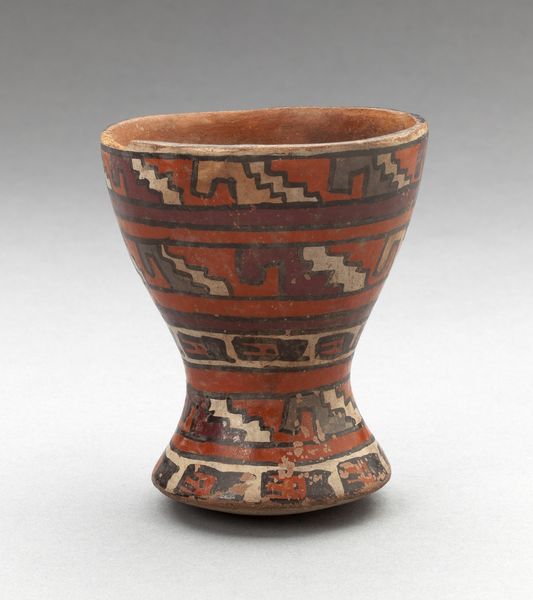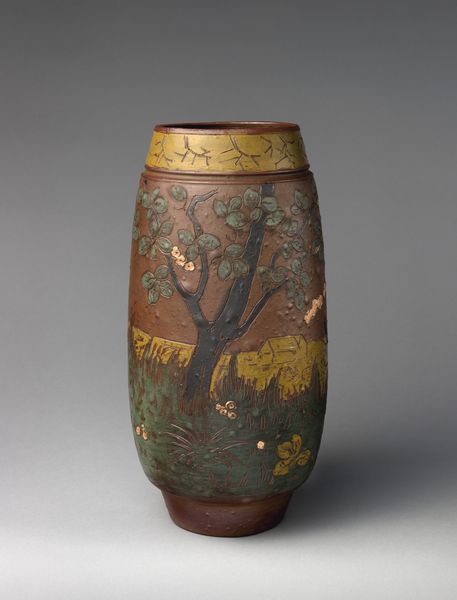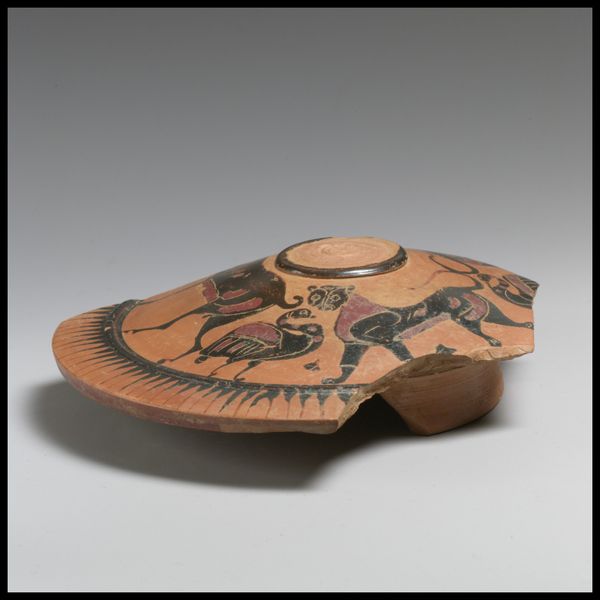
Vase in the Form of a Tropical Plant with Bird and Deity 1887 - 1888
0:00
0:00
carving, sculpture, wood
#
organic
#
carving
#
figuration
#
sculpture
#
symbolism
#
wood
#
post-impressionism
Dimensions: 21.5 × 17 × 12 cm (8 1/2 × 6 1/2 × 4 1/2 in.)
Copyright: Public Domain
Editor: Here we have Paul Gauguin's "Vase in the Form of a Tropical Plant with Bird and Deity" created between 1887 and 1888. It's crafted from wood. It feels somewhat totemic to me, primal even. What draws your eye, initially? Curator: The crude carving, absolutely. It screams of manual labor. Look at the material itself, the wood, clearly not precious. Gauguin is subverting the traditional art hierarchy right here. He’s elevating a craft material into high art. Editor: I hadn't considered that angle. So you're saying the deliberate choice of materials is challenging artistic norms? Curator: Precisely. Consider the colonial context. Gauguin was consciously rejecting European industrialism. He’s romanticizing artisanal practices, looking at the making instead of refining. It's more than just representation. This is about celebrating a method of production. Editor: So, rather than seeing it just as a sculpture, we should think about the process of carving and how that relates to the world around Gauguin? Curator: Yes. Think about the tools used, the sheer labor. He’s saying something about value, labor, and consumption. Are those decorative colors native or foreign? Where did they source those pigments? Editor: I see, it opens a window to that moment, to the cultural exchange. I definitely have a deeper appreciation now, considering the active choices Gauguin made in his process and material. Curator: Exactly. The value isn't solely in the finished product, it’s in unpacking the circumstances and labor behind it.
Comments
No comments
Be the first to comment and join the conversation on the ultimate creative platform.
